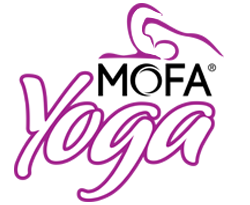
Inversions & Period
August 25, 2020
Yoga & PMS
November 6, 2020
Ashtanga Vinyasa Yoga is a style of yoga as exercise created by K. Pattabhi Jois during the 20th century, often promoted as a modern-day form of classical Indian yoga. He claimed to have learnt the system from his teacher, Tirumalai Krishnamacharya. The style is hot and energetic, synchronising breath with movements. The individual poses (asanas) are linked by flowing movements (vinyasas). Jois established his Ashtanga Yoga Research Institute in 1948. The current style of teaching is called Mysore style after the city in India where the practice was originally taught. Ashtanga Vinyasa Yoga has given rise to various spinoff styles of Power Yoga.
Pattabhi Jois claimed to have learned the system of Ashtanga from Tirumalai Krishnamacharya, who in turn claimed to have learned it from a supposed text called Yoga Kurunta by an otherwise unknown author, Vamama Rishi. This text was imparted to Krishnamacharya in the early 1900s by his Guru, Yogeshwara Ramamohana Brahmachari. Jois insists that the text described all of the āsanas and vinyāsas of the sequences of the Ashtanga system. However, the Yoga Kurunta text is said to have been eaten by ants, so it is impossible to verify his assertions. Additionally, it is unusual that the text is not mentioned as a source in either of the books by Krishnamacharya, Yoga Makaranda (1934) and Yogāsanagalu (c. 1941). According to Manju Jois, the sequences of Ashtanga yoga were created by Krishnamcharya. There is some evidence to support this in Yoga Makaranda, which lists nearly all the postures of the Pattabhi Jois Primary Series and several postures from the intermediate and advanced series, described with reference to vinyasa. There is also evidence that the Ashtanga Yoga series incorporates exercises used by Indian wrestlers and British gymnasts. Recent academic research details documentary evidence that physical journals in the early 20th century were full of the postural shapes that were very similar to Krishnamacharya's asana system.[33] In particular, the flowing Surya Namaskar, which later became the basis of Krishnamacharya's Mysore style, was in the 1930s considered as exercise, not part of yoga; Surya Namaskar and Krishnamacharya's yoga were taught separately, in adjacent halls of the Mysore palace.

History


Power Yoga began in the 1990s with "nearly simultaneous invention" by two students of K. Pattabhi Jois, and similar forms led by other yoga teachers. Beryl Bender Birch created what Yoga Journal calls "the original Power Yoga" in 1995. Bryan Kest, who studied Ashtanga Yoga under K. Pattabhi Jois, and Baron Baptiste, a Bikram Yoga enthusiast, separately put their own spins on the style, and branded it. Neither Baptiste's Power Yoga nor Kest's Power Yoga are synonymous with Ashtanga Yoga. In 1995, Pattabhi Jois wrote a letter to Yoga Journal expressing his disappointment at the association between his Ashtanga Yoga, and the newly coined style "power yoga", referring to it as "ignorant bodybuilding".

Risk of injury
In an article published by The Economist, it was reported that "a good number of Mr Jois's students seemed constantly to be limping around with injured knees or backs because they had received his "adjustments", yanking them into Lotus, the splits or a backbend". Tim Miller, one of Jois's students, indicates that "the adjustments were fairly ferocious".Injuries related to Jois's Ashtanga Yoga have been the subject of discussion in a Huffington Post article. In 2008, yoga researchers in Europe published a survey of practitioners of Ashtanga Yoga, indicating that 62 percent of the respondents had suffered at least one injury that lasted longer than one month. However, the survey lacked a control group (of similar people not subject to the treatment, such as people who had practised a different form of yoga), limiting its validity.



